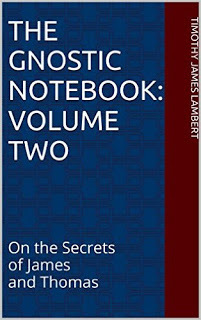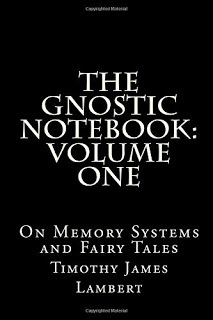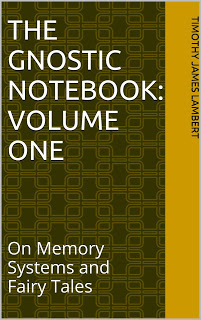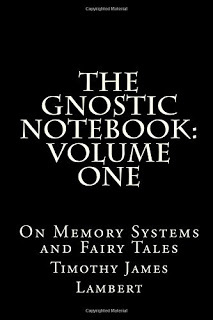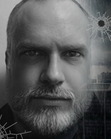Timothy James Lambert's Blog, page 2
July 13, 2016
Collection of reviews for The Gnostic Notebook: On the Secrets of James and Thomas
Published on July 13, 2016 04:39
July 10, 2016
The Grimm Brothers' Tweenage Sources
Contrary to public perception, the Grimm Brothers relied on a cadre of teen and preteen girls from Hessian upper-class families.
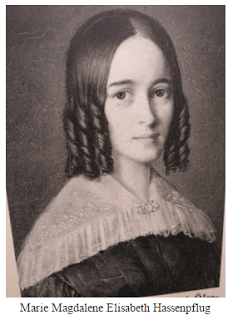 This entry is in response to those who believe that it is impossible for the tales of the Grimm Brothers to contain encrypted layers of meaning such as the instances I wrote about in my book The Gnostic Notebook: On Memory Systems and Fairy Tales.
This entry is in response to those who believe that it is impossible for the tales of the Grimm Brothers to contain encrypted layers of meaning such as the instances I wrote about in my book The Gnostic Notebook: On Memory Systems and Fairy Tales.
Basically, their criticism comes down to the unlikelihood that such a complicated system of encryption would have been integrated into the piece of folklore during its existence as a purely oral tradition, which seems highly unlikely. After all, the keys to these tales are themselves part of a literary tradition, so it seems unlikely that a tale which originated within the oral tradition would be dependent on such a written system for decryption.
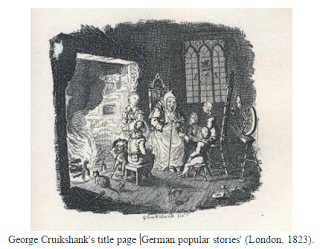 I agree completely. I see no way that these codes existed within the tales if the tales were being transmitted orally. At the same time, I clearly see evidence that the tales were encrypted with hidden layers of meaning. This would seem to indicate that those specific tales in which I identified codes never existed within oral form.
I agree completely. I see no way that these codes existed within the tales if the tales were being transmitted orally. At the same time, I clearly see evidence that the tales were encrypted with hidden layers of meaning. This would seem to indicate that those specific tales in which I identified codes never existed within oral form.
According to their notes, the brothers found The Strange Musician "from Lorsch, near Worms," which refers to the Abbey Lorsch with its famous monastic library. It seems unlikely that this tale ever existed in an oral form, but was instead part of a collection (now lost) of these sorts of tales. The Three Sluggards’ is actually from the book Schimpf und Ernst which was published in 1522 by Johannes Pauli, so another story which likely never existed in oral form.
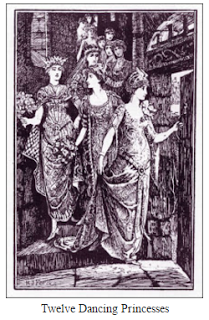 Many of the tales came from the Wild family, which Wilhelm married into, and the Hassenpflugs. Lisette Wild b. 1782, 28 years old in 1810, was responsible for so many of Charles Perrault’s stories finding their way into the Grimm canon. The Twelve Dancing Princesses came from Jenny von Droste zu Hülshoff b.1795, 15 years old in 1810. She apparently engaged in a long an unconsummated love affair with Wilhelm. The Golden Key was contributed by Marie Hassenpflug b.1788, 22 years old in 1810. It seems likely that many of these stories were crafted by the girls themselves in an attempt to outdo one another as they vied for the attention of the brothers.
Many of the tales came from the Wild family, which Wilhelm married into, and the Hassenpflugs. Lisette Wild b. 1782, 28 years old in 1810, was responsible for so many of Charles Perrault’s stories finding their way into the Grimm canon. The Twelve Dancing Princesses came from Jenny von Droste zu Hülshoff b.1795, 15 years old in 1810. She apparently engaged in a long an unconsummated love affair with Wilhelm. The Golden Key was contributed by Marie Hassenpflug b.1788, 22 years old in 1810. It seems likely that many of these stories were crafted by the girls themselves in an attempt to outdo one another as they vied for the attention of the brothers.
So, to review, of the four stories I presented in Volume One, The Strange Musician likely came from a monastic library, The Golden Key came from Marie Hassenpflug, The Three Sluggards from Johannes Pauli and The Twelve Dancing Princesses from Jenny von Droste zu Hülshoff, where perhaps we should see Wilhelm as the old wounded soldier and the twelve sisters as all the various available young aristocratic Wilds and Hassenpflugs.
I’d say that none of these tales originated in the oral tradition. Rather they were all composed as literature. The Strange Musician and The Three Sluggards came from monastic writers while The Twelve Dancing Princesses and The Golden Key were written by young ladies looking to impress the Grimm brothers, who were naïve enough to believe that the fairy tales they were concocting were actually folktales that the girls had heard as children.
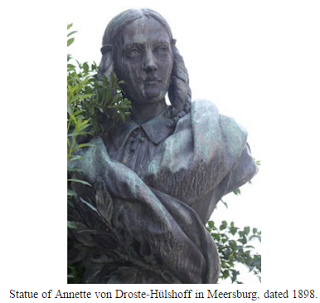 Anna von Droste Hulshoff was ten years old when she met Wilhelm and he claimed that she knew more tales than anyone he had ever met. However he found her “pushy and unpleasant” and “she wanted to radiate her brilliance constantly and jumped from one topic to the next, but she truly promised to copy everything down that she knows and send it.” According to
Clever Maids: The Secret History of the Grimm Fairy Tales
by Valerie Paradiz, though he was nine years her senior, “Wilhelm fell into an immature competition with her, afraid as he was of her wild intellect.” He even wrote of the nightmares he had of her, “[she was] cloaked completely in a dark purple flame and, one after another, pulled single hairs [from her head], flinging them at me through the air.” He added that the hairs “transformed themselves into arrows” which ”could have easily made me blind.” She was born two months premature, was nearly blind and was a near child prodigy in Music, Latin, Literature and the Natural Sciences.
Anna von Droste Hulshoff was ten years old when she met Wilhelm and he claimed that she knew more tales than anyone he had ever met. However he found her “pushy and unpleasant” and “she wanted to radiate her brilliance constantly and jumped from one topic to the next, but she truly promised to copy everything down that she knows and send it.” According to
Clever Maids: The Secret History of the Grimm Fairy Tales
by Valerie Paradiz, though he was nine years her senior, “Wilhelm fell into an immature competition with her, afraid as he was of her wild intellect.” He even wrote of the nightmares he had of her, “[she was] cloaked completely in a dark purple flame and, one after another, pulled single hairs [from her head], flinging them at me through the air.” He added that the hairs “transformed themselves into arrows” which ”could have easily made me blind.” She was born two months premature, was nearly blind and was a near child prodigy in Music, Latin, Literature and the Natural Sciences.
A willful precocious little genius who at ten years of age knew more tales than anyone Wilhelm had ever met. Is it completely beyond all reason to suggest that she may have slipped in a creation of her own among the many she had learned during her years as a child?
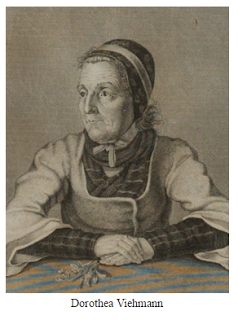 There are many other tales that come from actual oral storytellers such as Dorothea Viehmann whose work shows no evidence of encryption. I am not concerned with those tales, but only this very specific subset. I see these texts solely as literary pieces because the complexity of the encryption systems demands that the stories be in written form, much like Bach could not have crafted his self-referential compositions solely in his head. Something that complex needs to be written down.
There are many other tales that come from actual oral storytellers such as Dorothea Viehmann whose work shows no evidence of encryption. I am not concerned with those tales, but only this very specific subset. I see these texts solely as literary pieces because the complexity of the encryption systems demands that the stories be in written form, much like Bach could not have crafted his self-referential compositions solely in his head. Something that complex needs to be written down.
If we accept the common view of how the brothers collected these tales then there is that difficulty. However if the girls who contributed these stories modified some pieces of folklore or created stories completely, then there is no problem. Or if we assume that Wilhelm modified the stories before putting them into print as he was known to have edited and to have inserted psychological and mythical motifs into the tales himself.
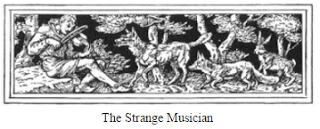 My personal view is that while Wilhelm was in communication with Jenny von Droste Hulshoff during their years-long romance, he revealed the hidden reading he had discovered in The Strange Musician. This, in turn, inspired her to craft a fairy tale around the I Ching based on the idea of a wounded soldier selecting his bride from twelve sisters. The tale was secretly a gift, a token of their unfulfilled romance. I do not need to point out the fascination young ladies have with encoded communication, consider pig Latin.
My personal view is that while Wilhelm was in communication with Jenny von Droste Hulshoff during their years-long romance, he revealed the hidden reading he had discovered in The Strange Musician. This, in turn, inspired her to craft a fairy tale around the I Ching based on the idea of a wounded soldier selecting his bride from twelve sisters. The tale was secretly a gift, a token of their unfulfilled romance. I do not need to point out the fascination young ladies have with encoded communication, consider pig Latin.
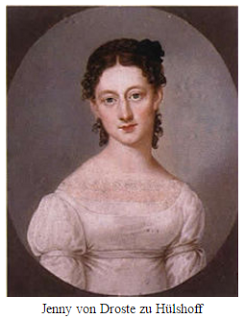 Also, it all seems rather incestuous. The brothers had no objectivity. Wilhelm was romancing the contributors, and we are supposed to trust his judgment concerning the accuracy of their reports? It isn’t that the brothers failed to control against the collection of fraudulent data, but rather that never even conceived of the need to do so.
Also, it all seems rather incestuous. The brothers had no objectivity. Wilhelm was romancing the contributors, and we are supposed to trust his judgment concerning the accuracy of their reports? It isn’t that the brothers failed to control against the collection of fraudulent data, but rather that never even conceived of the need to do so.
At the same time, I can easily argue against my position by pointing out the obvious as I have already done in Volume One. No sign of Gurdjieff’s triads existing before Gurdjieff and the I Ching wasn’t known Europe when The Three Sluggards was originally published. And regardless of all, I have written above about the brothers’ research methods, I am really not all that interested exploring the matter further, especially when my present solution is to assume that a teenage girl with a crush wrote The Twelve Dancing Princesses. I prefer shifting mists and deluded entrancement to the tawdry adolescent romance my solution demands.
 This entry is in response to those who believe that it is impossible for the tales of the Grimm Brothers to contain encrypted layers of meaning such as the instances I wrote about in my book The Gnostic Notebook: On Memory Systems and Fairy Tales.
This entry is in response to those who believe that it is impossible for the tales of the Grimm Brothers to contain encrypted layers of meaning such as the instances I wrote about in my book The Gnostic Notebook: On Memory Systems and Fairy Tales.Basically, their criticism comes down to the unlikelihood that such a complicated system of encryption would have been integrated into the piece of folklore during its existence as a purely oral tradition, which seems highly unlikely. After all, the keys to these tales are themselves part of a literary tradition, so it seems unlikely that a tale which originated within the oral tradition would be dependent on such a written system for decryption.
 I agree completely. I see no way that these codes existed within the tales if the tales were being transmitted orally. At the same time, I clearly see evidence that the tales were encrypted with hidden layers of meaning. This would seem to indicate that those specific tales in which I identified codes never existed within oral form.
I agree completely. I see no way that these codes existed within the tales if the tales were being transmitted orally. At the same time, I clearly see evidence that the tales were encrypted with hidden layers of meaning. This would seem to indicate that those specific tales in which I identified codes never existed within oral form. According to their notes, the brothers found The Strange Musician "from Lorsch, near Worms," which refers to the Abbey Lorsch with its famous monastic library. It seems unlikely that this tale ever existed in an oral form, but was instead part of a collection (now lost) of these sorts of tales. The Three Sluggards’ is actually from the book Schimpf und Ernst which was published in 1522 by Johannes Pauli, so another story which likely never existed in oral form.
 Many of the tales came from the Wild family, which Wilhelm married into, and the Hassenpflugs. Lisette Wild b. 1782, 28 years old in 1810, was responsible for so many of Charles Perrault’s stories finding their way into the Grimm canon. The Twelve Dancing Princesses came from Jenny von Droste zu Hülshoff b.1795, 15 years old in 1810. She apparently engaged in a long an unconsummated love affair with Wilhelm. The Golden Key was contributed by Marie Hassenpflug b.1788, 22 years old in 1810. It seems likely that many of these stories were crafted by the girls themselves in an attempt to outdo one another as they vied for the attention of the brothers.
Many of the tales came from the Wild family, which Wilhelm married into, and the Hassenpflugs. Lisette Wild b. 1782, 28 years old in 1810, was responsible for so many of Charles Perrault’s stories finding their way into the Grimm canon. The Twelve Dancing Princesses came from Jenny von Droste zu Hülshoff b.1795, 15 years old in 1810. She apparently engaged in a long an unconsummated love affair with Wilhelm. The Golden Key was contributed by Marie Hassenpflug b.1788, 22 years old in 1810. It seems likely that many of these stories were crafted by the girls themselves in an attempt to outdo one another as they vied for the attention of the brothers. So, to review, of the four stories I presented in Volume One, The Strange Musician likely came from a monastic library, The Golden Key came from Marie Hassenpflug, The Three Sluggards from Johannes Pauli and The Twelve Dancing Princesses from Jenny von Droste zu Hülshoff, where perhaps we should see Wilhelm as the old wounded soldier and the twelve sisters as all the various available young aristocratic Wilds and Hassenpflugs.
I’d say that none of these tales originated in the oral tradition. Rather they were all composed as literature. The Strange Musician and The Three Sluggards came from monastic writers while The Twelve Dancing Princesses and The Golden Key were written by young ladies looking to impress the Grimm brothers, who were naïve enough to believe that the fairy tales they were concocting were actually folktales that the girls had heard as children.
 Anna von Droste Hulshoff was ten years old when she met Wilhelm and he claimed that she knew more tales than anyone he had ever met. However he found her “pushy and unpleasant” and “she wanted to radiate her brilliance constantly and jumped from one topic to the next, but she truly promised to copy everything down that she knows and send it.” According to
Clever Maids: The Secret History of the Grimm Fairy Tales
by Valerie Paradiz, though he was nine years her senior, “Wilhelm fell into an immature competition with her, afraid as he was of her wild intellect.” He even wrote of the nightmares he had of her, “[she was] cloaked completely in a dark purple flame and, one after another, pulled single hairs [from her head], flinging them at me through the air.” He added that the hairs “transformed themselves into arrows” which ”could have easily made me blind.” She was born two months premature, was nearly blind and was a near child prodigy in Music, Latin, Literature and the Natural Sciences.
Anna von Droste Hulshoff was ten years old when she met Wilhelm and he claimed that she knew more tales than anyone he had ever met. However he found her “pushy and unpleasant” and “she wanted to radiate her brilliance constantly and jumped from one topic to the next, but she truly promised to copy everything down that she knows and send it.” According to
Clever Maids: The Secret History of the Grimm Fairy Tales
by Valerie Paradiz, though he was nine years her senior, “Wilhelm fell into an immature competition with her, afraid as he was of her wild intellect.” He even wrote of the nightmares he had of her, “[she was] cloaked completely in a dark purple flame and, one after another, pulled single hairs [from her head], flinging them at me through the air.” He added that the hairs “transformed themselves into arrows” which ”could have easily made me blind.” She was born two months premature, was nearly blind and was a near child prodigy in Music, Latin, Literature and the Natural Sciences.A willful precocious little genius who at ten years of age knew more tales than anyone Wilhelm had ever met. Is it completely beyond all reason to suggest that she may have slipped in a creation of her own among the many she had learned during her years as a child?
 There are many other tales that come from actual oral storytellers such as Dorothea Viehmann whose work shows no evidence of encryption. I am not concerned with those tales, but only this very specific subset. I see these texts solely as literary pieces because the complexity of the encryption systems demands that the stories be in written form, much like Bach could not have crafted his self-referential compositions solely in his head. Something that complex needs to be written down.
There are many other tales that come from actual oral storytellers such as Dorothea Viehmann whose work shows no evidence of encryption. I am not concerned with those tales, but only this very specific subset. I see these texts solely as literary pieces because the complexity of the encryption systems demands that the stories be in written form, much like Bach could not have crafted his self-referential compositions solely in his head. Something that complex needs to be written down.If we accept the common view of how the brothers collected these tales then there is that difficulty. However if the girls who contributed these stories modified some pieces of folklore or created stories completely, then there is no problem. Or if we assume that Wilhelm modified the stories before putting them into print as he was known to have edited and to have inserted psychological and mythical motifs into the tales himself.
 My personal view is that while Wilhelm was in communication with Jenny von Droste Hulshoff during their years-long romance, he revealed the hidden reading he had discovered in The Strange Musician. This, in turn, inspired her to craft a fairy tale around the I Ching based on the idea of a wounded soldier selecting his bride from twelve sisters. The tale was secretly a gift, a token of their unfulfilled romance. I do not need to point out the fascination young ladies have with encoded communication, consider pig Latin.
My personal view is that while Wilhelm was in communication with Jenny von Droste Hulshoff during their years-long romance, he revealed the hidden reading he had discovered in The Strange Musician. This, in turn, inspired her to craft a fairy tale around the I Ching based on the idea of a wounded soldier selecting his bride from twelve sisters. The tale was secretly a gift, a token of their unfulfilled romance. I do not need to point out the fascination young ladies have with encoded communication, consider pig Latin. Also, it all seems rather incestuous. The brothers had no objectivity. Wilhelm was romancing the contributors, and we are supposed to trust his judgment concerning the accuracy of their reports? It isn’t that the brothers failed to control against the collection of fraudulent data, but rather that never even conceived of the need to do so.
Also, it all seems rather incestuous. The brothers had no objectivity. Wilhelm was romancing the contributors, and we are supposed to trust his judgment concerning the accuracy of their reports? It isn’t that the brothers failed to control against the collection of fraudulent data, but rather that never even conceived of the need to do so.At the same time, I can easily argue against my position by pointing out the obvious as I have already done in Volume One. No sign of Gurdjieff’s triads existing before Gurdjieff and the I Ching wasn’t known Europe when The Three Sluggards was originally published. And regardless of all, I have written above about the brothers’ research methods, I am really not all that interested exploring the matter further, especially when my present solution is to assume that a teenage girl with a crush wrote The Twelve Dancing Princesses. I prefer shifting mists and deluded entrancement to the tawdry adolescent romance my solution demands.
Published on July 10, 2016 18:32
June 24, 2016
Collection of reviews for The Gnostic Notebook: On Memory Systems and Fairy Tales
Published on June 24, 2016 05:56
June 23, 2016
The Gnostic Notebook: On Plato, the Fourth Dimension, and the Lost Philosophy
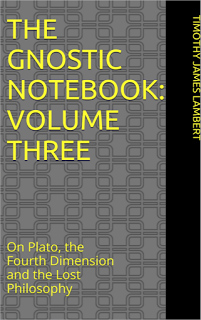 The last time we saw the author, he had just broken off his presentation of the seven key parables of Jesus, with only three remaining. These were the seven canonical parables identified within the Secret Book of James, the successful interpretation of which is supposedly sufficient to unlock the mysteries hidden within the teachings of Jesus. Lambert claimed that he was unable to continue without first revealing an "alternative philosophical/cosmological system based on the properties" possessed by structures built from tightly packed spheres of specific quantities.
The last time we saw the author, he had just broken off his presentation of the seven key parables of Jesus, with only three remaining. These were the seven canonical parables identified within the Secret Book of James, the successful interpretation of which is supposedly sufficient to unlock the mysteries hidden within the teachings of Jesus. Lambert claimed that he was unable to continue without first revealing an "alternative philosophical/cosmological system based on the properties" possessed by structures built from tightly packed spheres of specific quantities. Now he is back with a new book which documents his quest for this mysterious system. Follow along as Lambert searches for evidence of this secret system in the most peculiar of places from Salvador Dali's Crucifixion (Corpus Hypercubus) through Plato's Allegory of the Cave to the very formation of the elements and beyond.
What he finds almost defies explanation, and this book is certain to challenge the beliefs of any who read it.
Kindle Version
Published on June 23, 2016 17:41
June 30, 2015
The Gnostic Notebook Mentioned on Bart Ehrman's blog
My book has been mentioned in the comments section on Bart Ehrman's blog: http://ehrmanblog.org/the-same-traditions-in-oral-cultures/
Published on June 30, 2015 06:46
My book has been mentioned in the comments section on Bar...
My book has been mentioned in the comments section on Bart Ehrman's blog: http://ehrmanblog.org/the-same-traditions-in-oral-cultures/
Published on June 30, 2015 06:46
May 1, 2015
New Review on Amazon!
5.0 out of 5 stars
An interesting look into antiquity.
April 18, 2015By Somone timeo.Format:Kindle Edition|Verified PurchaseDeciphering the coded. This book is a rosetta stone for gnosis enthusiasts.It offers an alternative to the obvious interpretations of fairy tales, and how they may be applied for a different purpose.Triads,the I Ching are utilised as tools deciphering a message. A must read for anyone interested in mythology and Gnosticism.
Published on May 01, 2015 07:25
April 15, 2015
First Review on Amazon!
4.0 out of 5 stars An excellent read!!! April 15, 2015By kubarFormat:Kindle EditionThis book is an excellent read. It is obvious that Timothy James Lambert knows his subject matter well and has a great love & interest in it. His style of writing displays a lot of patience and gives the feeling of him sitting in front of you explaining the points simply yet profoundly.
The subject matter is also extremely fascinating. To see the Bible and various fairytales opened up & their inner secrets revealed is a journey into another time and space. Using the concepts of the Triad and the I Ching Lambert shows how secrets were hidden within the Fairy Tales of old only to be realized by those with knowledge.
I am looking forward to Vol. 2.
Published on April 15, 2015 15:30
April 4, 2015
Watson meets The Gnostic Notebook
I decided to take the description of my book The Gnostic Notebook and put it in The Watson Personality Insights service.
According to the site: "The Watson Personality Insights service uses linguistic analytics to extract a spectrum of cognitive and social characteristics from the text data that a person generates through blogs, tweets, forum posts, and more."
You are shrewd, skeptical and tranquil.You are imaginative: you have a wild imagination. You are philosophical: you are open to and intrigued by new ideas and love to explore them. And you are laid-back: you appreciate a relaxed pace in life.Your choices are driven by a desire for modernity.You are relatively unconcerned with both taking pleasure in life and independence. You prefer activities with a purpose greater than just personal enjoyment. And you welcome when others direct your activities for you.*Compared to most people who participated in our surveys.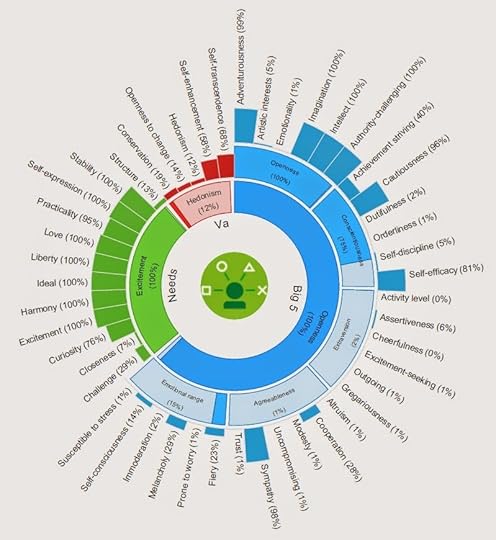
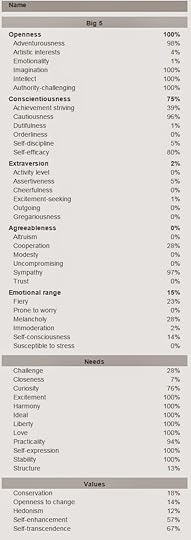
According to the site: "The Watson Personality Insights service uses linguistic analytics to extract a spectrum of cognitive and social characteristics from the text data that a person generates through blogs, tweets, forum posts, and more."
You are shrewd, skeptical and tranquil.You are imaginative: you have a wild imagination. You are philosophical: you are open to and intrigued by new ideas and love to explore them. And you are laid-back: you appreciate a relaxed pace in life.Your choices are driven by a desire for modernity.You are relatively unconcerned with both taking pleasure in life and independence. You prefer activities with a purpose greater than just personal enjoyment. And you welcome when others direct your activities for you.*Compared to most people who participated in our surveys.


Published on April 04, 2015 16:45

